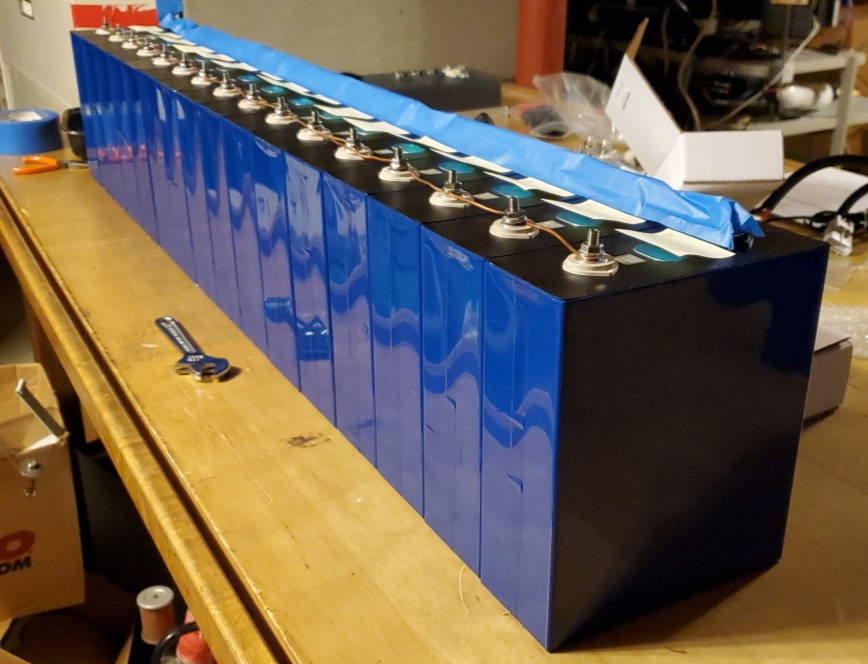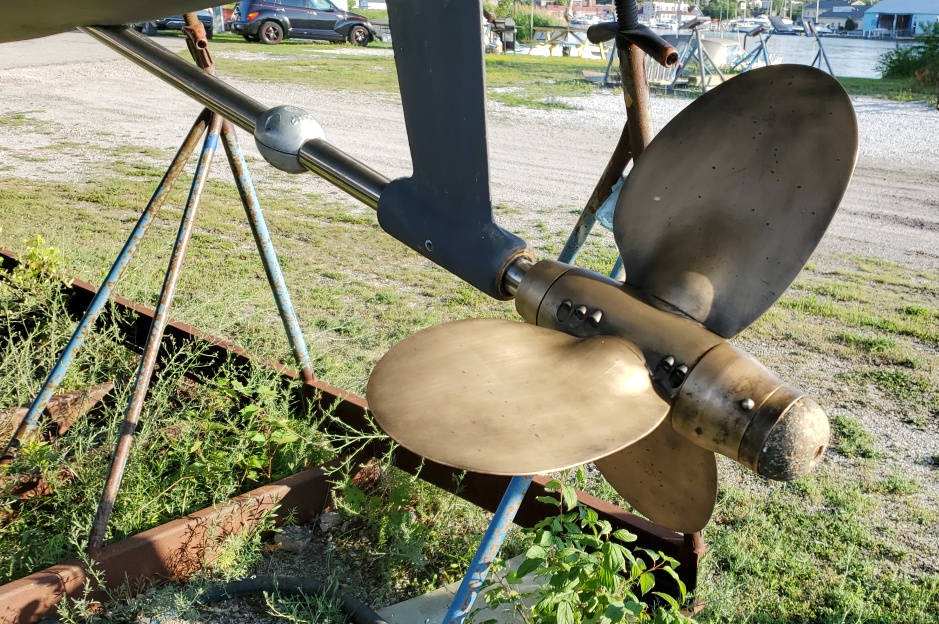|
LIMITS
You run into limits in the different aspects of electric drive system design. For example, if you have a 10kW motor but you have a battery max output capacity of 5kW your usable motor capacity is limited to 5kW. Here's some more detail on the limits I came across.
(still developing this section...)
 LIMITS ON SPEED
LIMITS ON SPEED
Motor Capacity
The first limit on speed is motor capacity. The motor needs to have enough power to get you to speed. Assuming the power can get to the motor the speed is limited to the output capacity of the motor. If you want to go 6 knots but 10kW only gets you to 5.5 that's your limit.
Battery C-Rating
To get the power at the motor the battery needs to be able to continuously deliver that power. If your motor can run at 10,000 Watts it won't matter if your battery can only output 6000 Watts. You will be limited to the speed you get at 6000 Watts. That means the C-rating of the battery (max current capacity) needs to be at least as much as the motor rating to get the full output of the motor. And there is another problem here. If your motor asks for more power than your battery can deliver the battery may try and be damaged by over-heating (without over-current protection or limiting). And this could happen well before you get the battery fuse to blow if you have it sized to allow over-capacity for a short burst. You really want the C-rating of your battery to exceed what the motor can ask of it. My motor max is 12,000 Watts and the batter c-rating is 13,400 Watts. The battery main fuse is 400 amps which would be 19,000 Watts.
Cooling
You also need to keep the motor cool. If the cooling is only up to 6000W continuous then that's your power limit regardless of the power source (battery or genset). If you want to be able to sustain high speeds (like .85 to .9 hull speed) you need cooling to match. To get the full capacity of the motor the cooling system needs to be able to cool the motor at least up to that power level. And unlike a diesel, excess cooling won't hurt your electric drive system.
DC Genset
If you're running with a genset you have another set of limits. If it's a DC genset your limit is the output capacity of the genset (plus the previously mentioned limit of the cooling system).
AC Genset
If it's an AC genset you're powering the motor through the charger. In that case you're limited by the output capacity of the charger. If the genset can deliver 6000 watts but the charger can only output 4000 watts to the motor that's your limit. To take the full output available from the AC genset the charger output needs to be at least the same and even a bit greater to account for losses (typically 5-10%).
 LIMITS ON RANGE
LIMITS ON RANGE
Battery Capacity
The fundamental limit on range is battery capacity. If you want to motor at 2000 watts for 4 hrs you need 8,000 Watt hours of usable capacity. Usable capacity is a function of battery rated capacity and depth of discharge (DoD). If you have 10,000 Whrs of capacity and the DoD is 50% you have 5,000 Whrs of usable capacity and your range at 2000 Watts is 2-1/2 hrs. If you make 5 knots at 2000 Watts that's 12-1/2 miles range.
Fuel Capacity
With a genset your range will be limited by your fuel capacity just as with an engine. You might stretch out a little more range by running partly on battery.
With either battery or fuel range will be affected by speed. Go faster and range will be reduced. Motor sailing can greatly extend range. For my boat in 15 knots wind, motor sailing at 6.5 knots takes about the same power as motoring at 4.5 knots. And range at 4.5 is more than 3X what it is at 6.5.
 LIMITS ON CHARGING
LIMITS ON CHARGING
Shore Power Input
Your charging on shore power will be limited to the capacity of the hookup. Typical shore power in the US is 120V, 30A or 3600 Watts. I wouldn't expect to be ably to push that to the max so 3200 watts may be a better figure to use. That is the maximum available power from a single shore power hookup.
Charger Output
To use all the power available from the shore power hookup the charger needs to have at least the same output capacity. If you have a 2000 Watt charger that's your charging limit regardless of how much power may be available on the shore power hookup. On the other hand if you have 5000 Watts of charging capacity you will only be able to use 3200 watts from the single shore power hookup described above. So that is superfluous capacity unless you can increase shore power or unless you have a genset capable of outputting the 5000 watts your charger can deliver.
Lets say you have 50,000 Whrs of battery so you can motor all day at 6 knots. You get to your destination marina and plug in to recharge. If you have the typical single hookup you will have 3200W of capacity. You'll need 15 hours to fully recharge that giant battery. Even if you have a charger capable of 10,000 watts you can only get 3200 from the single shore power hookup. Double shore power hookups are an option and not uncommon. That will still be limited to 6400 Watts but at least with that you can fully recharge overnight if your charger output is high enough. Even then you will be running that shore power hookup at full tilt for 9 or 10 hours. That will be harder on the components involved. I think it is generallly better to design your system to typically run at 50-65% capacity.
Battery C-Rating
Whatever your charger capacity you cant pump more power into the battery than it can accept. If you have 10,000 watts of charger output but the C-Rating of the battery is 5000 Watts that's your charging limit.
 LIMITS ON REGEN
LIMITS ON REGEN
When you're sailing the motion of the boat can turn the propeller and make the motor into a generator. That energy can be captured and put into the battery. That's called regen or regeneration. Regen is limited by speed. If you have enough wind to sail at 6+ knots you can get more from regen than sailing at 5 knots. A lot more as it turns out. More speed gets more regen. Generally a larger propeller with more blades will get more regen. On boats the size of mine (6 tons, 33 feet) regen seems to max out at 400 to 600 watts. It probably slows you down about 1/2 knots too though I need some better data on that.
LIMITS ON SOLAR
Solar power will be limited by the area of the solar panels and by the angle to the sun. Larger solar panels will have greater output. Having panels perpendicular to the Sun is optimum. Any lower angle will reduce output. Shade can significantly reduce output of solar panels.
| 
